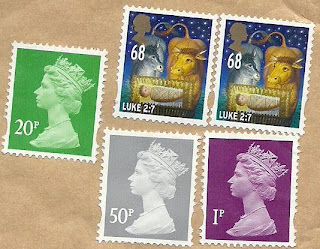
The Union Flag or Union Jack.
Sent by Dan from England.
This is from Wikipedia : The Union Flag, also known as the Union Jack, is the flag of the United Kingdom. It retains an official or semi-official status in some Commonwealth Realms; for example, it is known as the Royal Union Flag in Canada. It is also used as an official flag in some of the smaller British overseas territories. The current design dates from the Union of Great Britain and Ireland in 1801.
Whether to use "Union Flag" or "Union Jack" is a matter of debate by many.
The Flag Institute, the vexillological organisation for the United Kingdom, stated that the term Union Flag is a "relatively recent idea". Jack was a word previously used to denote any flag. It also noted that "From early in its life the Admiralty itself frequently referred to the flag as the Union Jack, whatever its use, and in 1902 an Admiralty Circular announced that Their Lordships had decided that either name could be used officially. In 1908 a government minister stated, in response to a Parliamentary question, that "the Union Jack should be regarded as the National flag". Nevertheless, the term "Union Flag" is used in King Charles's proclamation of 1634, and in King George III's proclamation of 1 January 1801 concerning the arms and flag of the United Kingdom of Great Britain and Ireland. One theory is that the "Jack" part of the name may also have come from the name of King James I/James VI of Scotland.
When the first flag representing Britain was introduced on the proclamation of King James I in 1606, it became known simply as "the British flag" or "the flag of Britain". The royal proclamation gave no distinctive name to the new flag. The word "jack" was in use before 1600 to describe the maritime bow flag. By 1627 a small Union Jack was commonly flown in this position. One theory goes that for some years it would have been called just "the Jack", or "Jack flag", or "the King's Jack", but by 1674, while formally referred to as "His Majesty's Jack", it was commonly called the Union Jack, and this was officially acknowledged.
Amongst the proclamations issued by King George III at the time of the Union of 1801 was a proclamation concerning flags at sea, which referred to "Our Flags, Jacks, and Pendants" and forbade merchant vessels from wearing "Our Jack, commonly called the Union Jack" nor any pendants or colours used by the King's ships. In contrast, the King's proclamation of the same day concerning the arms and flag of the United Kingdom, not colours at sea, called the new flag "the Union Flag".
The size and power of the Royal Navy internationally at the time could also explain why the flag was named the "Union Jack"; considering the navy was so widely utilised and renowned by the United Kingdom and colonies, it is possible that the term "Jack" occurred because of its regular use on all British ships using the "Jack Staff" (a flag pole attached to the bow of a ship). Even if the term "Union Jack" does derive from the jack flag (as perhaps seems most likely), after three centuries, it is now sanctioned by use, has appeared in official use, and remains the popular term.
The term "Union Flag" is less well-known outside the United Kingdom,[11] and may refer to other union flags.

No comments:
Post a Comment